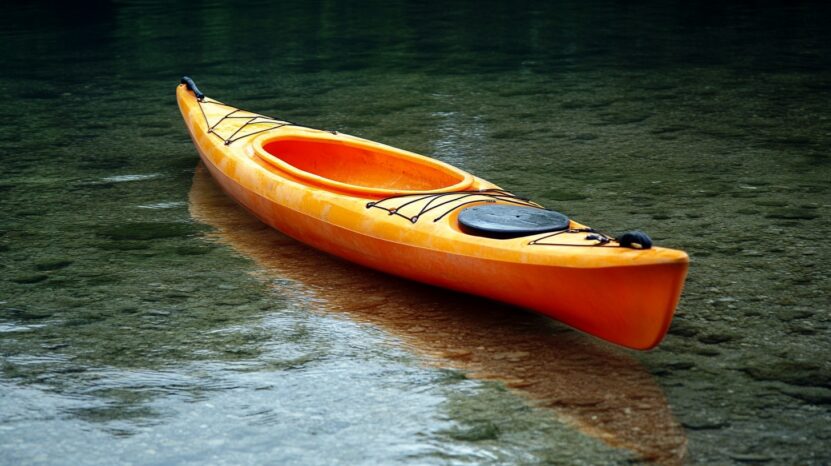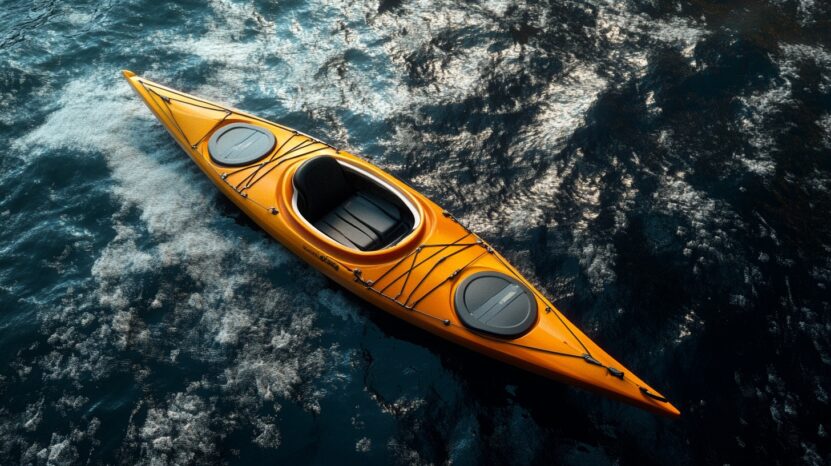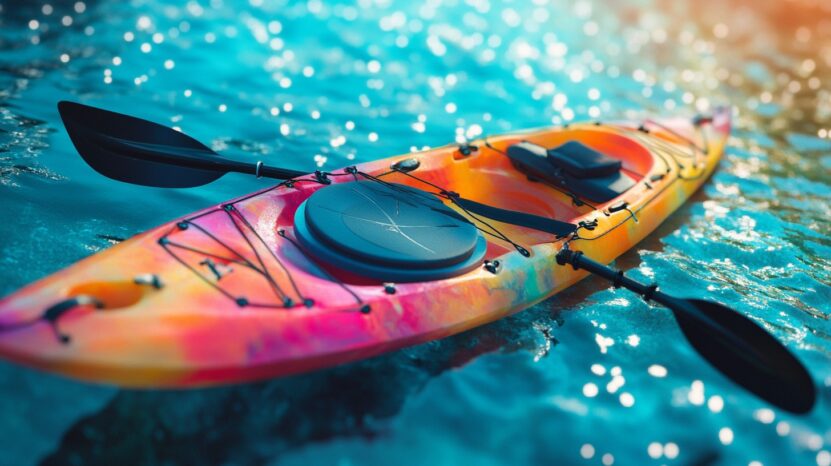Knowing all about the capacity limits of your watercraft is essential for both safety and a smooth paddling experience.
Exceeding this capacity can lead to reduced performance, making it difficult to maneuver or stay balanced in the water.
Calculating the load limit helps you ensure that you stay within a safe range, allowing for better stability and control while out on the water.
To help you make a proper decision, we’ll break down how to determine the maximum capacity your vessel can handle and why it’s crucial to follow these guidelines.
What is a Kayak’s Weight Limit?
A kayak’s weight limit refers to the maximum amount it can safely support while maintaining buoyancy and stability.
- The maximum limit
- The performance limit
The maximum limit is the total weight a kayak can support without sinking or becoming dangerously unstable.
Exceeding this limit compromises the kayak’s buoyancy and increases the risk of capsizing. However, for optimal performance, paddlers should stay well below this figure.
The performance limit is usually 65-70% of the kayak’s maximum capacity. Staying within this range ensures the kayak remains responsive, maneuverable, and tracks well through the water.
Being aware of both limits allows paddlers to enjoy a safer and more efficient experience on the water.
How to Calculate the Weight Limit of a Kayak
To determine if your kayak can safely support your total load, it’s important to calculate how much weight your kayak can handle for optimal performance.
It requires knowing both your kayak’s maximum capacity and understanding the formula for calculating the required capacity.
For the best paddling experience, you should aim to keep your total load within 65-70% of the kayak’s maximum capacity.
The formula for calculating the necessary maximum capacity is simple: divide the total load (your body weight plus gear) by 0.7.
For instance, if you and your gear weigh 210 lbs, you’ll need a kayak with a maximum capacity of at least 300 lbs (210 ÷ 0.7 = 300).
You can ensure that you are within the kayak’s optimal performance range, preventing sluggish paddling, poor tracking, and other issues.
Different Types of Kayaks and Their Weight Limits
Kayaks come in various styles, each with different weight limits based on their design, purpose, and materials.
- Recreational: These kayaks are generally designed for casual paddling on calm waters, with limits between 250 and 350 lbs. They are shorter and wider for stability.
- Touring/Sea: Designed for longer trips and open water, touring kayaks typically have higher limits of 300 to 400 lbs. These kayaks are longer and narrower for speed and efficiency.
- Fishing: Built for stability and carrying more gear, fishing kayaks can support between 400 and 600 lbs. They often feature wider hulls and additional storage capacity.
- Tandem: Designed for two paddlers, tandem kayaks have limits of 500 to 600 lbs. These kayaks are longer and heavier to accommodate both paddlers and gear.
- Inflatable: These kayaks vary widely in their limits, ranging from 300 to 750 lbs, depending on the model. Inflatables are lightweight, portable, and versatile, but their capacity depends on their air chamber design.
Choosing the right type of kayak based on its limit is crucial for a safe and enjoyable experience.
Factors Affecting Kayak Limits

Several key design elements impact a kayak’s capacity, with hull length, hull width, and hull volume being the most significant factors.
Each of these elements contributes to the overall buoyancy and stability of the kayak.
- Hull Length: Longer kayaks tend to have higher weight limits as they distribute weight more effectively over a greater surface area. They also provide better tracking in the water.
- Hull Width: Wider kayaks are generally more stable and can support more weight. However, they may be slower to paddle and less maneuverable.
- Hull Volume (Water Displacement): The volume of the kayak, or how much water it displaces, determines its buoyancy. Larger-volume kayaks can support more weight without sinking too deeply into the water.
These factors vary depending on the type of kayak and its intended use. Fishing kayaks, for example, are often wider and have higher limits for carrying gear, while touring kayaks are designed to balance speed and capacity.
Also Read: Learn the different kayak parts, their names, what they are for, and how they work!
Consequences of Exceeding the Weight Limit
Exceeding your kayak’s weight limit can have serious consequences, both for performance and safety.
- Performance Degradation: An overloaded kayak becomes difficult to paddle, sluggish in the water, and less responsive to directional changes. Paddlers may find it harder to maintain speed and control.
- Safety Risks: Exceeding the weight limit increases the risk of taking on water or capsizing, particularly in rough or choppy conditions. An overloaded kayak sits lower in the water, making it more susceptible to waves and water splashing over the sides.
- Impact on Stability: Heavy loads lower the kayak’s center of gravity, reducing its stability. As the kayak sits lower in the water, drag increases, and the paddler may experience difficulty maintaining balance.
Avoiding these consequences is crucial for a safe and enjoyable paddling experience. Staying within the performance weight limit is the best way to ensure that your kayak remains stable and easy to maneuver.
How to Weigh Yourself and Your Gear Accurately

To accurately determine if you are within your kayak’s weight limit, it’s important to know the total weight of both yourself and your gear.
- Personal: Start by weighing yourself on a bathroom scale.
- Gear: Use a luggage scale to weigh each piece of gear you’ll be bringing, including paddles, life vests, food, water, and fishing equipment.
- Add All Weights Together: Add up your weight and the total weight of all your gear. Be sure to include any passengers if you’re using a tandem kayak.
By accurately weighing yourself and your gear, you can determine if your total load falls within the kayak’s performance limit.
Is There a Way to Increase a Kayak’s Weight Limit?
- Buoyancy Enhancements: Adding outriggers to your kayak can increase its stability and slightly boost its weight capacity. Paddling in saltwater also increases buoyancy since saltwater is denser than freshwater.
- Limitations: However, it’s important to understand that there are limits to how much the capacity can be increased. Adding too much weight, even with enhancements, can compromise the kayak’s performance and safety.
While it’s possible to make minor adjustments, choosing a kayak that already has the appropriate weight limit for your needs is always the best strategy.

The Bottom Line
Choosing a kayak with the appropriate weight capacity is critical for both safety and performance.
Understanding the differences between maximum and performance weight limits, calculating the necessary capacity, and following guidelines for load distribution ensures a safer and more enjoyable paddling experience.
Always balance your gear and paddler weight to get the best performance from your kayak.

